The Desert War: Bolt Action Boot Camp Preparation // Part Three: Pushing The Envelope
September 3, 2018 by oriskany
As the excitement builds for the upcoming Bolt Action Boot Camp at Beasts of War studios, we venture once more into the deserts of North Africa, discussing and recreating some of the decisive battles that took place here during World War II.
Read The Original Article Series Here
For those just joining us, we took an overview of the Desert War’s origins in Part One, and then reviewed some of both sides’ early successes in Part Two. Now both sides are pushing the envelope, bringing in still more forces and driving them as far and as fast as they possibly can.
Care to join us? Do you have what it takes to engage and defeat an elusive and ferocious enemy, assuming the desert doesn’t kill you first?
As we saw last week, Rommel wasted no time in making an impact when he arrived in Africa. With only a handful of units from his 5th Light Division (the first battalions to get off the boat), he launched a blitz in March and April of 1941 that regained all territory the Allies had just taken in Libya. British forces took a terrible beating and their commander, General Richard O’Connor (the hero of Operation Compass), was captured along with much of his staff.
With O’Connor doing his best to enjoy German hospitality, his boss General Archibald Wavell had to take charge personally. Wavell’s forces in Egypt were still terribly weak, however, thanks in part to Allied commitments in East Africa (Abyssinia, Eritrea, and Somalia), as well as Greece and Malta. Nevertheless, just a month after taking command, Wavell went on the offensive against Axis positions in Libya with Operation “Brevity.”
As we can see from the map below, the Desert War swung wildly back and forth through the summer months of 1941. Brevity, Skorpion, Battleaxe, none of these attacks achieved significant gains. Meanwhile, the 9th Australian Division (and other units) held out in Tobruk, withstanding repeated Axis attacks for month after month, all while standing astride the only easy road Rommel could use to draw supplies from depots in Benghazi and Tripoli.
With these battles of 1941, we see the frustrating “see-saw” back-and-forth of the Desert War. We also see where interference from superiors often ruined a commanders’ best efforts. With Battleaxe, in particular, Wavell knew full well he wasn’t ready for an attack. But Churchill pressured him into a premature launch, and when Battleaxe predictably failed, Churchill promptly fired him.
Operation Crusader
Finally, Wavell’s replacement, General Claude Auchinleck, came up with a plan to break through to Tobruk once and for all. He called his attack Operation “Crusader.” Crusader can be a fun campaign to wargame because of the wild, free-wheeling nature of the combat.
For the tables pictured in this article, we selected an engagement on November 27th, where exhausted remnants of 15th Panzer Division had to race backwards toward Sidi Rezegh to prevent a New Zealand breakthrough to Tobruk. Here the Germans were caught between elements of the 22nd Armoured Brigade in the west and 4th Armoured Brigade from the south.
You may have noticed our tables are getting more crowded with tanks. Indeed, the Crusader battles were fought with much larger forces than previous Desert War engagements because both sides had feverishly built up forces through the summer and fall of 1941. For starters, the British “Western Desert Force” (already upgraded to the XIII Corps) had finally been upgraded to the famous Eighth Army everyone remembers.
Rommel, meanwhile, technically no longer commanded the Afrika Korps. His 5th Light Division had been upgraded to the 21st Panzer, and a new 90th Light Division had arrived. Also, most Italian forces in North Africa were formally placed under Rommel’s command. Thus, the “Afrika Korps” was now only part of Rommel’s newly-minted “Panzergruppe Afrika.”
So technically speaking, Rommel only commanded the Afrika Korps for about five months. The Afrika Korps (currently the 15th Panzer, 21st Panzer, and 90th Light Divisions, plus attached support units) was actually now commanded by the very capable General Ludwig Crüwell. Rommel and Crüwell were known to disagree violently at times, but together they made a formidable team when faced with a crisis.
Despite the rampant confusion that often bordered on chaos, Operation “Crusader” was an undeniable success, relieving Tobruk and ending its 241-day siege (the 9th Australian had been evacuated by sea and replaced some time ago with the 70th Infantry Division). By the time the Allies were finished on December 30th, Rommel had been tossed all the way back where he started at El Agheila just eight months before.
Churchill pressed Auchinleck to push further, but Commonwealth supply lines (stretching 650 miles back to Alexandria) yanked them to a halt like dogs at the end of iron chains.
Rommel, meanwhile, was now much closer to his supply base at Tripoli, a factor which helped his counterattack just two months later (January 1942). Yet again the British were pushed back across Cyrenaica, although this time they managed to halt the Germans and Italians short of Tobruk. The line settled near a town called Gazala, where Rommel would soon achieve his greatest, and perhaps most flawed, battlefield masterpiece.
Gazala: The Razor's Edge
Rommel’s offensive started well. After smashing through the 7th Armoured Division, his “right hook” got behind the British easily enough. But Rommel had pushed too far behind the Allies. Soon it was difficult to tell who was “cutting off” who, the armies were like two wrestlers who had each other in a headlock.
“Cutting off” enemy units on the operational level is actually a delicate matter of weight, momentum, logistics, and even battlefield psychology. After all, just as your forces are “behind” the enemy, so the enemy is “behind” your attacking units. Push too hard and too deep, and your “decisive thrust” behind enemy lines may find itself marooned, cut off, and annihilated. Just ask the British 1st Airborne at Arnhem during Operation Market-Garden.
For Rommel at Gazala, the matter was now a brute force and determination, with survival going to whoever choked out his opponent first. This “gut check” was the battle we recreated (in part) in these 15mm table photos, with the Germans and Italians trying to chew their way through the British 150th Brigade...and out of a trap of their own making.
Eventually, Rommel did break through, re-opening a route back to his own lines and routes of supply. Just like that, his pocket (already known as “The Cauldron”) had become salient, pushing into the Gazala Line. The British launched an attack at this salient (after giving Rommel plenty of time to dig in), but this Operation “Aberdeen” was an absolute disaster.
The British soon mounted another semi-organized attack, but German signal intelligence intercepted the message and Rommel was able to lay the perfect trap with 15th Panzer, 21st Panzer, 90th Light Division...virtually all his armour. They hit the British as they advanced from three sides. Suffice it to say the British Tank Corps still remembers June 13, 1942, as “Black Saturday.”
Another part of the Gazala battle that deserves mention is Bir Hacheim. Looking back at the map, we can see where this fortified “box” is the point around which Rommel’s whole army must swing. Well, the 1st Free French Brigade under General Pierre Koenig thought otherwise, and for two weeks held up the bulk of two divisions (90th Light and Italian “Trieste”). Some of these “French” soldiers were actually from Senegal, Equatorial Africa, and Madagascar.
Eight miles to the north, another position was similarly defended near Bir el Harmat by Major Liebmann and 400 Jewish volunteers recruited from British Palestine. After their protracted and heroic defence was finally overcome, Hitler ordered that these Jewish “political refugees” among the prisoners be executed.
To his credit, Rommel flatly ignored the order.
Sadly, Gazala was the end of the road for General Ludwig Crüwell, commander of the Afrika Korps. Flying over the battlefield, he was brought down by British ground fire and captured. Despite this, and learning that his wife had passed away back home, he still kept his keen wit. When brought as a prisoner back to an opulent hotel in Cairo, he cracked: “What a fine headquarters for Rommel this will make!”
The Battle of Gazala could have easily destroyed Panzerarmee Afrika and ended Rommel’s career. Instead, it was their greatest success and wound up basically destroying the better part of Eight Army. Tobruk fell quite easily this time, Churchill recalls it as one of the darkest personal days of the war. Hitler, meanwhile, promoted Rommel to Field Marshal, but as Rommel confessed to his wife: “I wish he’d have given me another division instead.”
Now, against orders, Germany’s youngest field marshal pushed his advantage. Ignoring the vehement protests of his superiors, he re-invaded Egypt, smashing a British defence at Mersa Matruh and pushing all the way to a tiny desert railroad town called El Alamein. He’d rolled his “risk dice” yet again but this time…he wouldn’t be getting away with it.
We hope you enjoy these continuing articles on the Desert War. Furthermore, we hope you’re getting excited about the impending Bolt Action Boot Camp, whether you’re attending the event or joining us via the live blog.
Either way, post your comments, questions, and feedback below.
"Do you have what it takes to engage and defeat an elusive and ferocious enemy, assuming the desert doesn’t kill you first?"
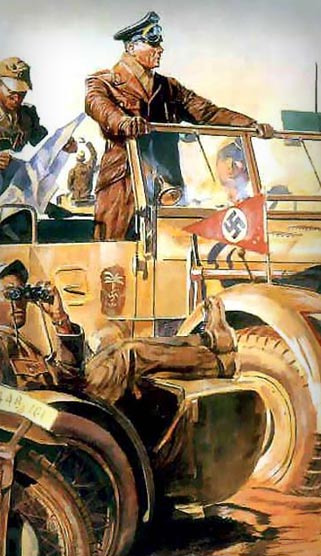
"The Battle of Gazala could have easily destroyed Panzerarmee Afrika and ended Rommel’s career. Instead, it was their greatest success..."









































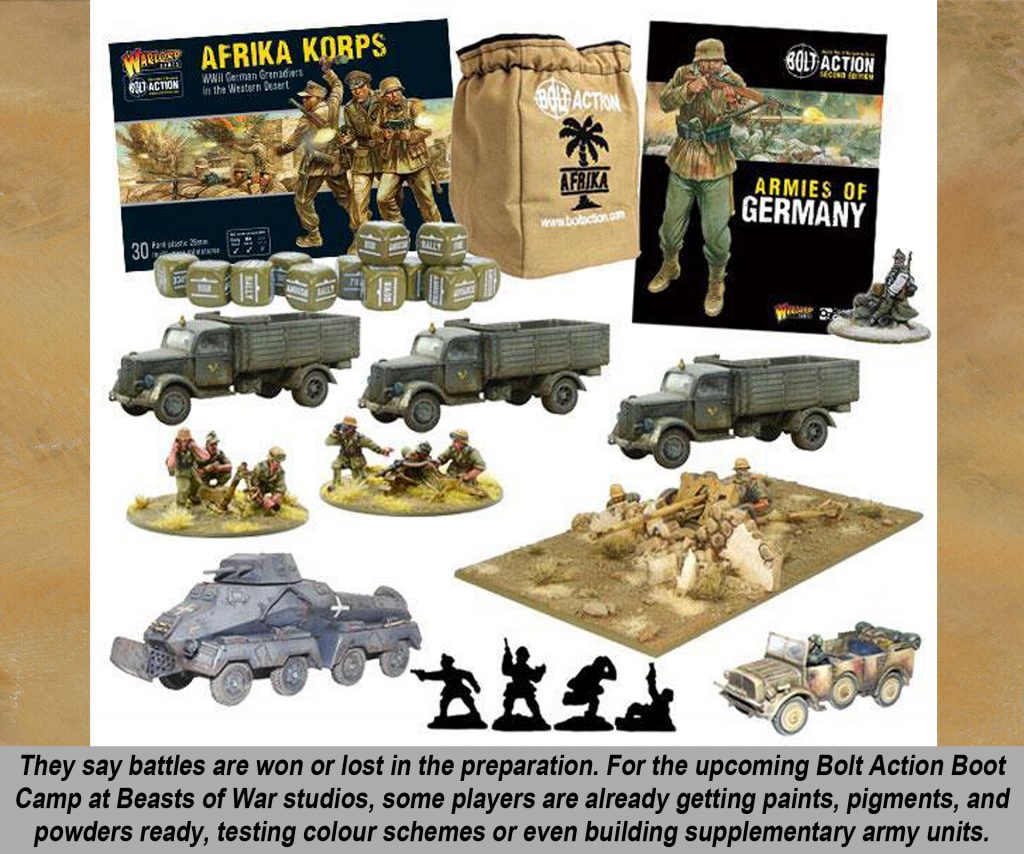
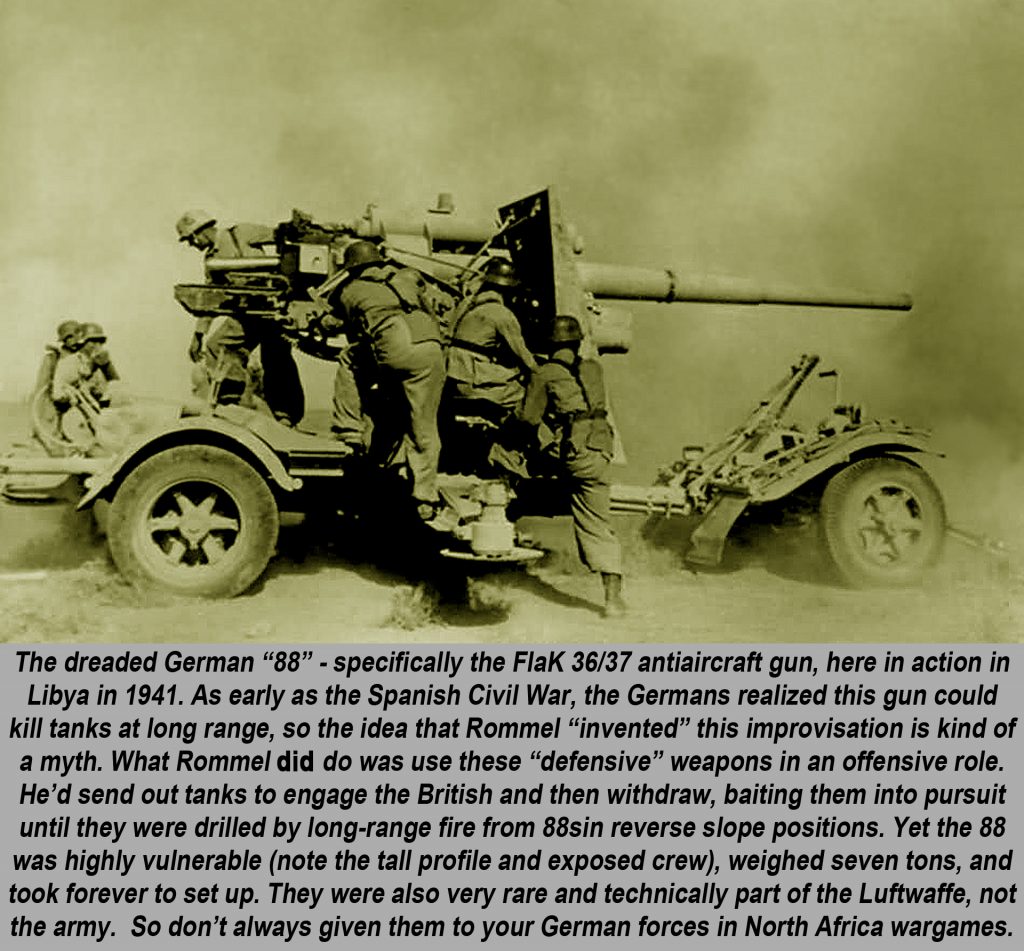
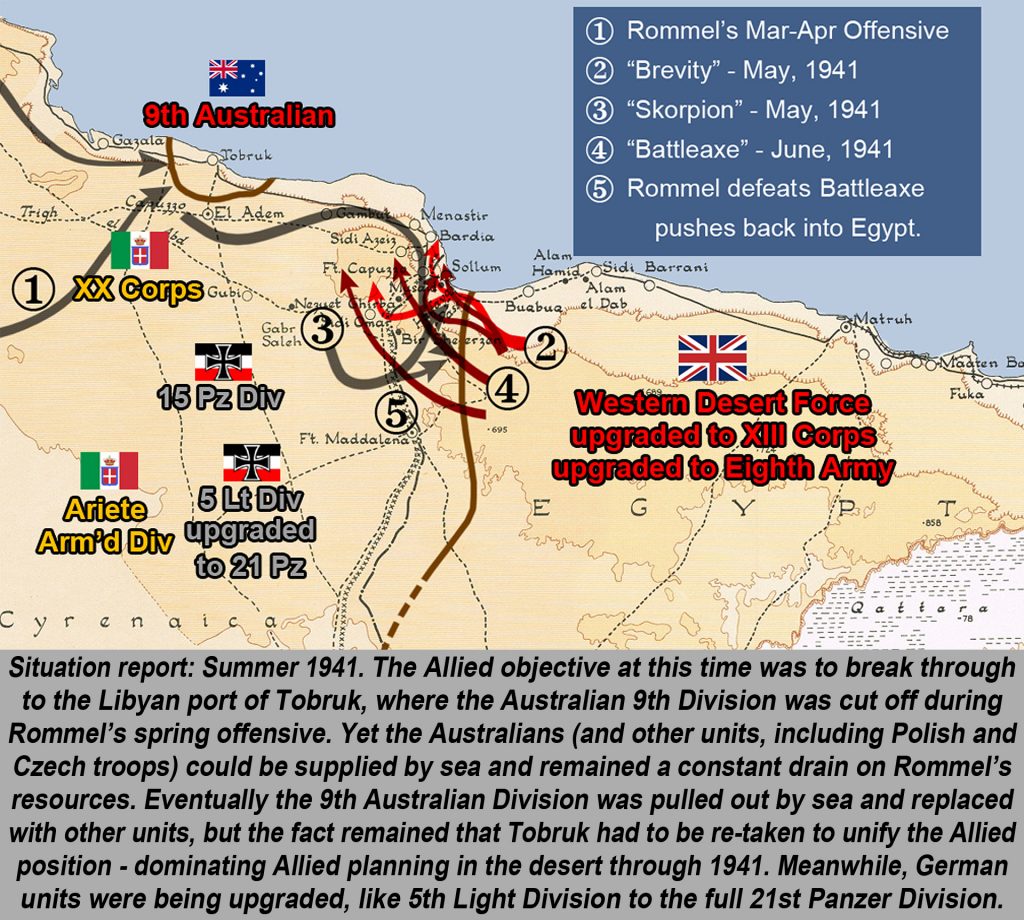
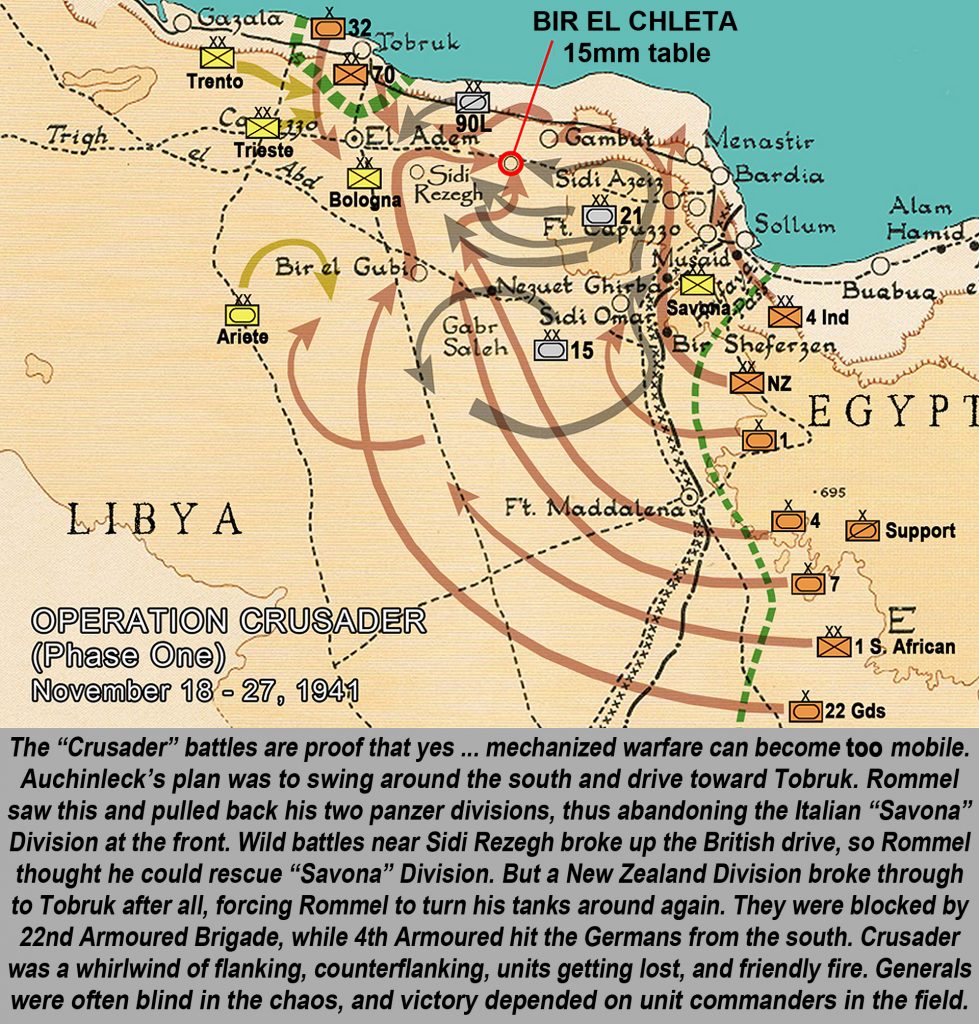
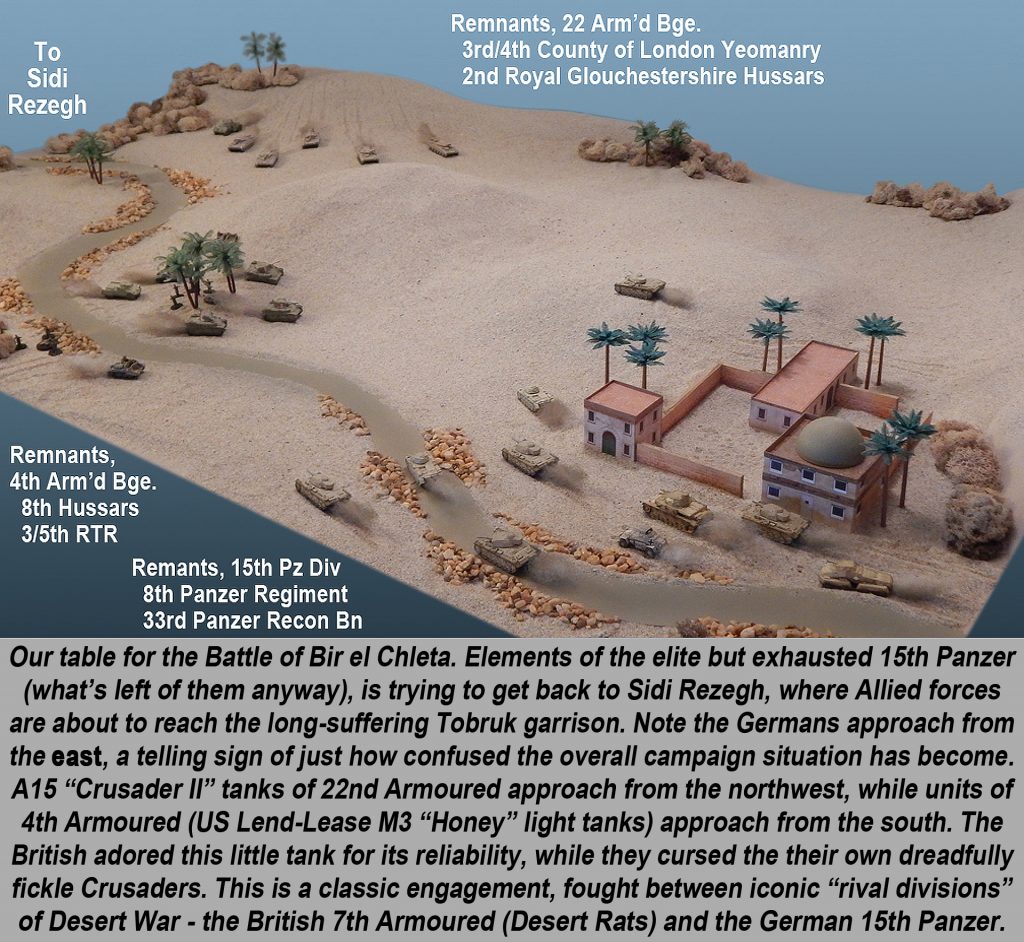
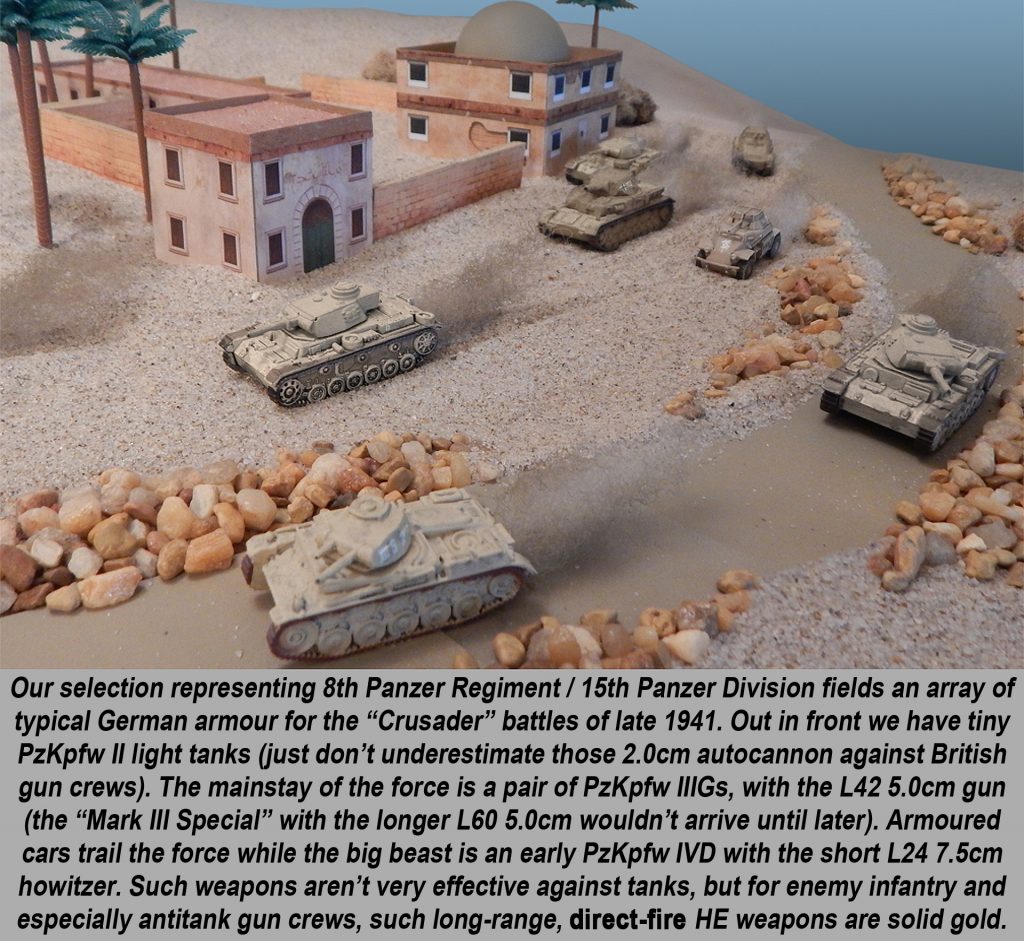
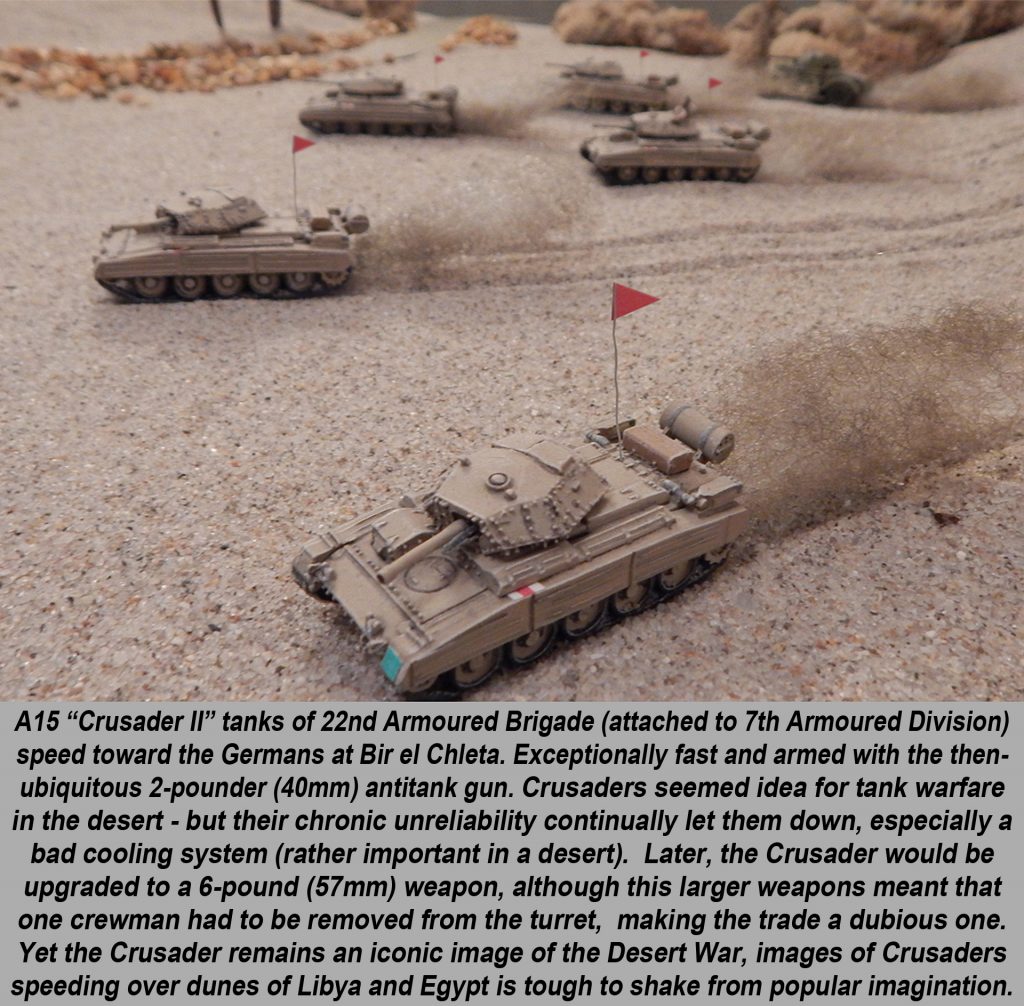
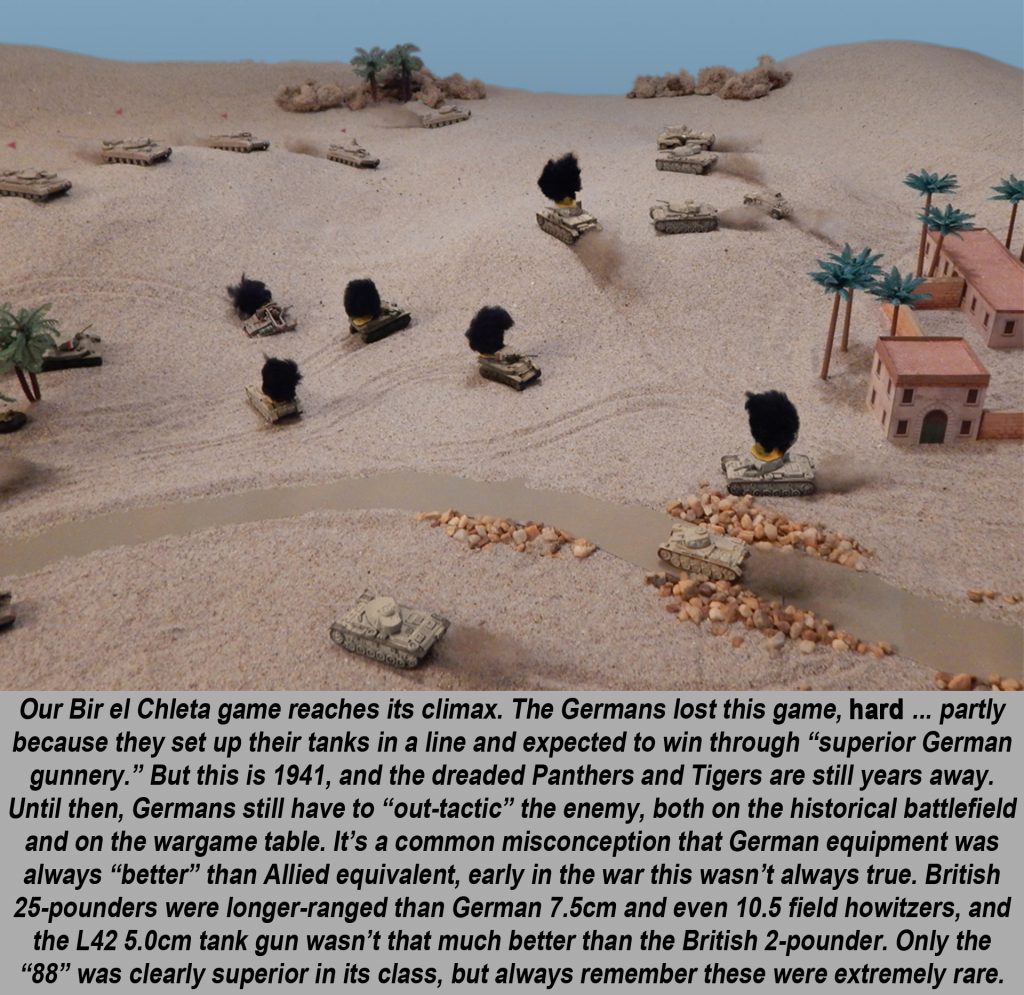
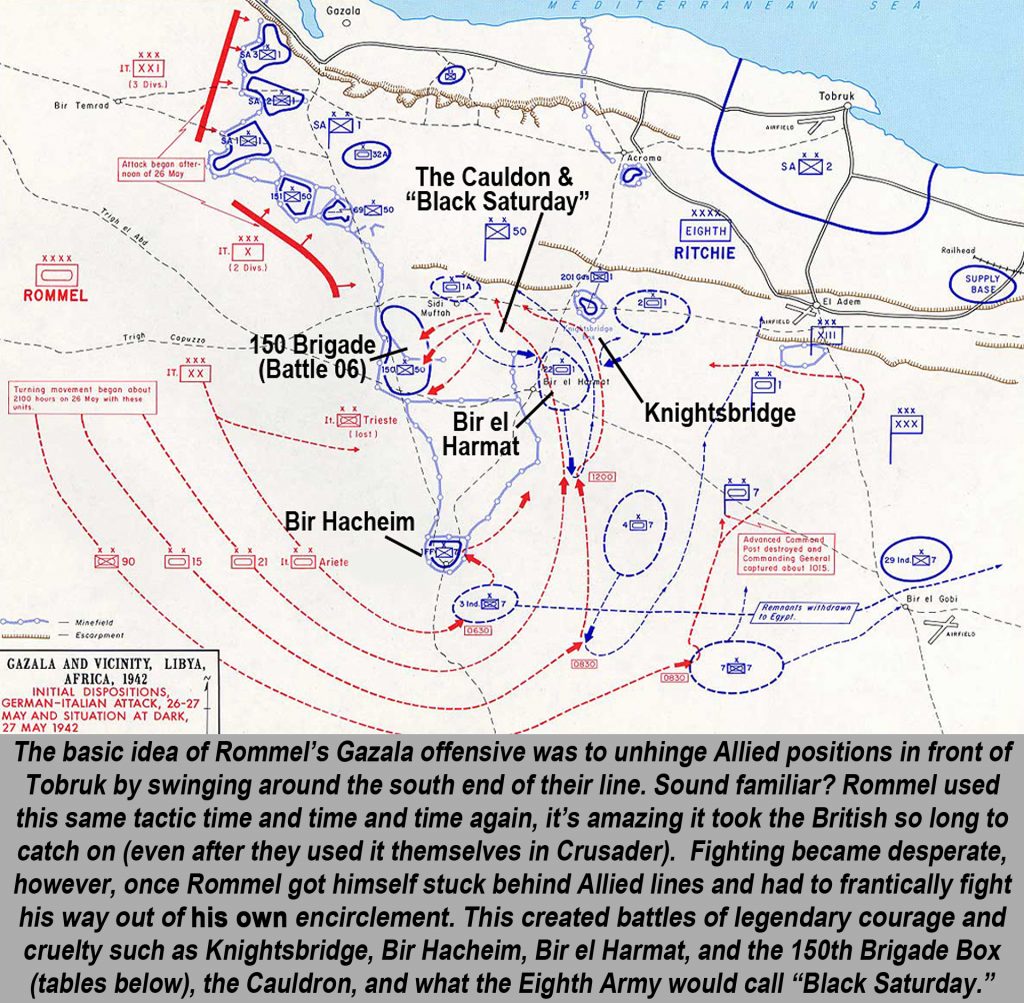
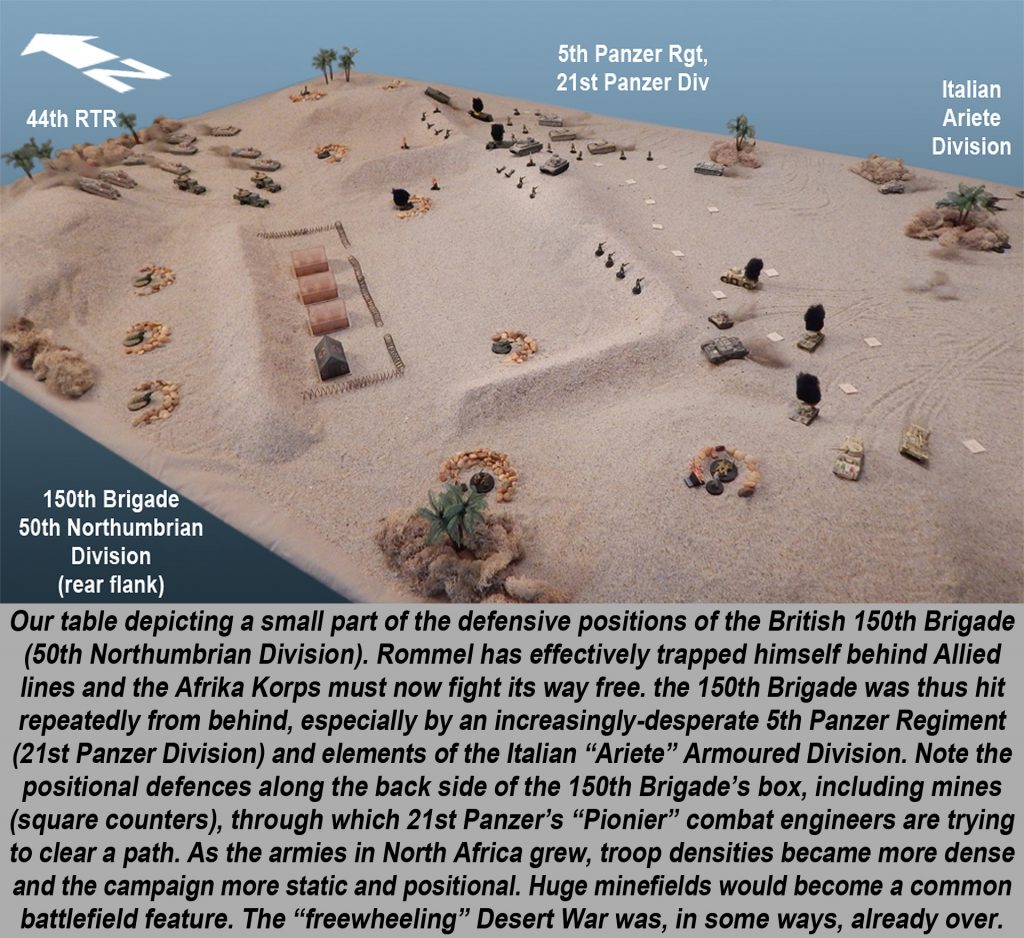
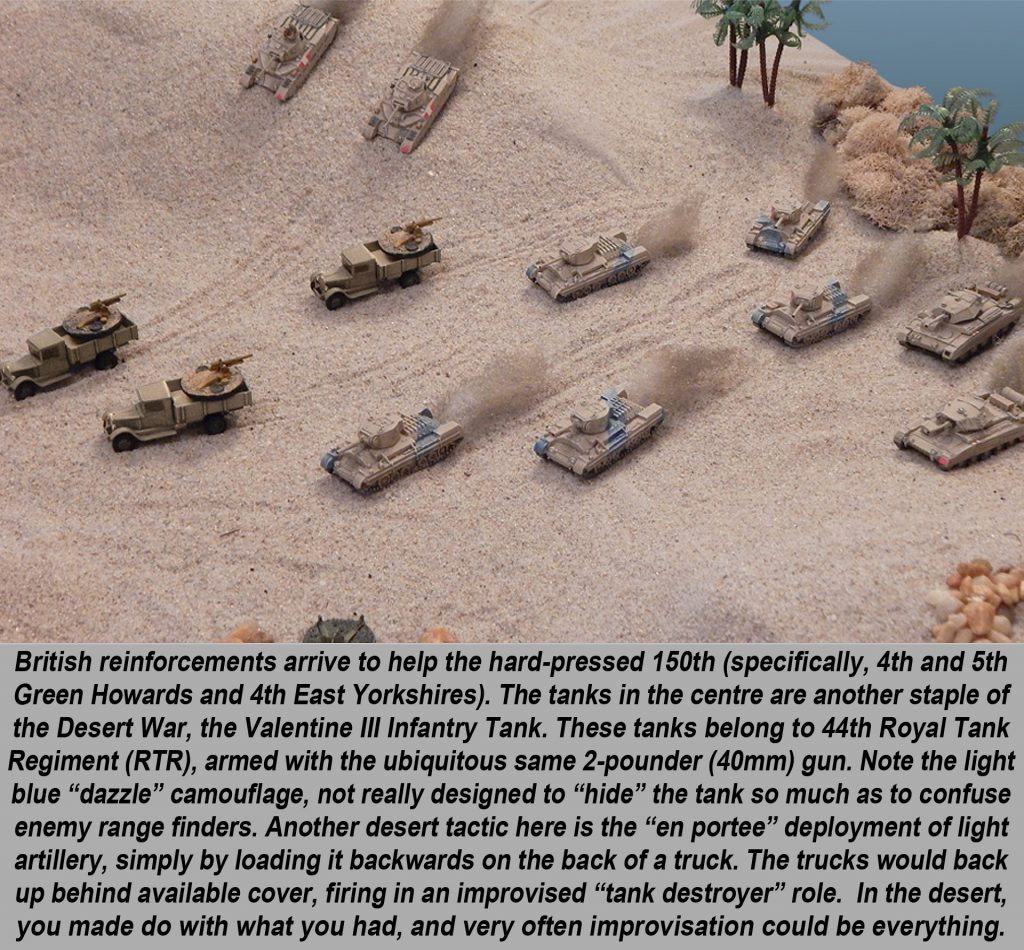































@oriskany another interesting article, really getting us in the mood for the bootcamp 🙂
Thanks very much for kicking us off, @commodorerob! 😀 Indeed, we’re at D-24 and counting down! 😀
Damn that close… I have to get stuff finished painting..lol
Yeah, these boot camps sneak up on you quick if you’re not careful.
But I will be ready I am determined 🙂 it’s actually remarkably easy to paint desert vehicles, the only one that has taken some time is the Matilda with the Cauntor scheme …?
That Valentine III you had on the other thread came out looking great!
Cheers, I am really happy with how the Valentine worked out. I must start a project log for my army 🙂
I agree. My LRDG army project log is doing pretty well, so I know people are interested in the subject matter. 😀
@oriskany as usual a good read, too the point and covering all the bases and very good refresher to people like myself who read all about this years ago.
Thanks very much, @bobcockayne . Yes, we cover a lot of ground in this one. Crusader and Gazala, some of the most complex battles of the Desert War.
First, I love the opening call to duty/action. It reminds me of the old propaganda films , or, more recently, the Starship Troopers movie. Secondly, I love the maps and map tables, especially the plane POV one. Finally, I enjoyed learning about all the other influential commanders involved in this theater. Most of us “documentary historians” are often given the impression it was all Rommel or Patton. It’s nice of your articles to destroy our illusions.
JOIN THE DESERT FIGHT!
Service guarantees citizenship!
. . .
Would you like to know more?
The Mobile Infantry uniforms almost match!!
Though calling the 8th Army horrible bugs may be a bit over the top!!!
Hey, those bugs were badass. And I’m not calling either side bugs. I have a small LRDG force getting ready to ship out but once at the boot camp, I’m remaining neutral. 😀
Yes please but I think you’re going to make us wait until next Monday!?!?
Great read,as always sir. So much to choose from in gaming terms and for me certainly the right setting for our boot camp.
Thanks, @brucelea – yes, next week is Part 04, where we go over some well-travelled ground … the Battles of El Alamein (Mersa Metruh, First Alamein, Alam Halfa Ridge, Second Alamein). We also have an LRDG raid on an German-Italian airfield at Barce (Sept 42). Re: the boot camp, I’m thinking of setting up another optional campaign. Smaller in scale than last time to better fit the Bolt Action scale. I was thinking Crusader, so we could include the trench boards the guys are building (near the Tobruk perimeter the British / CW were driving towards), the urban tables they… Read more »
Sounds like a done deal to me mate, it will match in really well with what the BoW crew are building. I love the whole idea that the boards progress from the desert, to the defences and through into the built up areas. Given the options on the BA spruces, I was thinking of doing a Sikh unit. I’ll have to have a look through the 8th Army ORBAT and see who was about.
Sikh unit: Artizan Design have metal Sikhs that can be used as NCOs and officers. With a box of plastic Sikhs from Warlord for the “plain” soldiers you can build up a formidable force.
Cheers @jemmy, I’ll go have a look at what they have to offer.
The movie has Aussie’s but have a feeling they were replaced by Poles by end of Seige.
I will confirm when get to that bit of book.
Awesome, @brucelea – plenty of choices for Punjab, “Frontier Rifles” forces, Rajputana Rifles, etc. Most obvious are 4th Indian Division, but also there is 29th Indian brigade for the the “Oasis Force,” originally detailed to protect lines of communication and supply but committed to reduction operations near the end of the battle. There is also 4th Btn, 11th Sikh Rgt – attached to 7th Indian Brigade / 4th Indian Division. Definitely in the front of the action aling with 7th Armoured, we could easily see them shoulder to shoulder in some of these Bolt Action engagements. That’s another reason I… Read more »
Yes, @bobcockayne – the Australian 9th Infantry was in Tobruk at the start, and through much of the siege. Later they were replaced with UK 70th Infantry Division, 32nd Army Tank Brigade, and a brigade of Carpathian rifles, made of up of Free Poles and Free Czechs. From one of my sources: The Carpathian brigade was originally formed in April, 1940 in French Syria and was composed of Poles exiled from their country after its fall. The brigade was organized and trained as a French mountain brigade. After the fall of France, the soldiers of the brigade were kicked out… Read more »
My BA Commonwealth infantry are styled after ANZACS, can use them as Aussies for early in the campaign and Kiwis later. Haven’t got any early campaign armour, just got Shermans and a Grant for after Alamein and onto Mereth Line. Don’t know if I’ve got time to get any early armour done, still working on my Tunisian Churchills at the mo’.
Well, @damon – the last thing I possibly want to do is exclude anyone’s kit they may be bringing. New Zealand Division is definitely in the thick of it during Crusader near Sidi Rezegh and El Adem. In fact, it was a NZ regiment I believe that was the first to actually break through the Tobruk perimeter and relieve the siege. As far as armor goes, we can wing it. I mean we’re not going for 110% historical accuracy here.I don’t even know what kind of armor will be on the tables for the “official” Bolt Action Boot Camp games… Read more »
@oriskany, no problems with the tanks, I’m happy to roll with whatever the ‘official’ scenarios have planned, if there’s any tanks at all.
If there’s a chance during any free play, may be nice to look at a Longstop Hill type scenario; infantry assault on a hill top position, judged impassable to tanks, and a Churchill making it to the top of the hill and slugging it out with a Pak gun at 10 yards, that’s the highlight of the engagement for me.
Lonsgtop Hill is definitely a famous one, @damon . I would say the Tunisian terrain is a little hillier and rockier than that encountered in the Western Desert, but from what I’ve seen in some of the VLOGS, I believe we should have tables that would match or approximate such an encounter.
@oriskany, you must have some sort of Cajun voodoo thing going on mate. I have been having a look through orbats of the period and had identified the 2nd (Royal) battalion (Ludhiana Sikhs), 11th Sikh regiment. They were part of 7th Inf Bde, 4th Indian Div and more importantly had the 1st battalion Royal Sussex regiment as part of the brigade. I thought this would be good as some of the excerpts of memoirs of the Divisional officers say that the units were pretty much split up and spread to the four winds during this period. This probably matches the… Read more »
@brucelea – “some sort of Cajun voodoo thing going …” Well, I am in the Deep South and I have spent all weekend eating BBQ, smoking Honduran cigars (Cuban cigars are still illegal here to my knowledge) and downing 100-proof Southern Comfort … so it is possible. 😀 Here’s the source I have (Gregory Moore, Gregpanzerblitz.com) with a 4th Indian Division OOB for the start of Crusader. I also see the 1st Bn Royal Sussex. This is where I got the 4th/11th Sikh Rgt. But these OOBs are constantly changing, so by the time we get to the end of… Read more »
Well my none SAS/LRDG force is loosely based on the 2nd Battalion Beds & Herts Regiment served with the 10th Infantry Brigade 4th Division during the North African campaigns not sure how they fit in..lol
No worries at all, @commodorerob – that’s the great thing about special forces … they can appear anywhere! To my knowledge these LRDG patrols weren’t part of of any specific battalion, regiment, or brigade, at least not operationally (administratively the men were drawn / recruited from certain regiments to be sure).
They’ll show up where they’re needed! That’s what they do! 😀
A great read @oriskany they weren’t holding back and going for Brock every time trying to get the upper hand.
Definitely. When the two sides are more or less evenly matched, SOMETIMES both sides think they can win (or their superiors think they SHOULD be winning and apply subsequent pressure) and so you get very risky, dangerous, and often ill-advised attacks like this. Remember that the “rule” is generally to outweigh your opponent 3:1 before launching an assault on a prepared position.
Sometimes this leads to the opposite, static warfare where neither side wants to do anything.
Here in North Africa, though, we got the former.
Also not much in the way of civilian collateral damage, so both sides were always ready to unleash artillery and tanks at the sniff of a chance. Compare the early part of Normandy with the later concerns for civilians, flattening Caen was not an ideal move.
Indeed, @damon – not the “densest” battlefield when it comes to civilian populations or infrastructure. The only hesitation most commander might have to a flattening artillery barrage on a moment’s notice, though, would be ammunition supply, especially on the Axis side.
Definitely and all preparations go out the window if your leader wants results.
One of Monty’s greatest attributes, in my book. Whereas generals like Wavell, Cunningham, Ritchie, and Auchinleck caved to Churchill’s pressure for an attack RIGHT NOW regardless of how well prepared the army may or may not be, Monty stood him off and resolved to launch Operations like Lightfoot and Supercharge (2nd Alamein) only when he was damned good and ready.
Thank you for making this complex period of the war more understandable. Really interesting to see how it all went backwards and forwards. I cant imagine the rate of attrition both sides suffered. I dont think I would of wanted to be in charge of the logistics, that alone must of been a battle. Looking forward to the next installment.
Thanks very much, @minty45 . Indeed, the back-and-forth swings of the Desert War from September 1940 – November of 1942 really highlight the frustrating limitations faced by both sides. One side starts winning, and pushes the enemy back, but after advancing “x” distance, the supply lines grow too long and the “winning” army gets markedly weaker as a result. Meanwhile, the “losers” are falling back on their own supply lines, and thus getting stronger. A reverse is inevitable, and the whole process starts again in reverse. And again and again and again. It would almost be funny if these armies… Read more »
Again an awesome article @oriskany. Cant wait to play at the boot camp 😀 Was it not in the Spanish civil war, that the germans “discovered” how good the 88 was against armor?
Thanks, @svboel – some antiaircraft units of the “Condor Legion” fighting for the Spanish Nationalists in 1936 found that their brand new FlaK 36s were amazing against Soviet-built T-26s and the like fighting for the Spanish Republicans. But this test almost “doesn’t count” as it was only one or two isolated cases, and the tanks engaged were very flimsy and could be engaged by dedicated PaK 36 3.7cm guns and the like (although not at an 8.8cm’s range, of course). The “real” discovery came in France, Battle of Arras, late May 1940, when 88s were used in adversity against BIG… Read more »
Very much enjoying the series and getting ready. I am getting my colour pallet together and some test mini’s but also tried to read up. I tried “Monty’s Highlanders: 51st Highland Division in the Second World War” while this is very factual and well written it’s also not an easy read. I think I prefer the condensed overview and dipping in of this series and some relevant detail compared to the hard core historical orders of battle and divisional manoeuvres. Cant say I didn’t try now but 25% of the book got me. Back to Trashy Sci-fi and reading this… Read more »
No worries at all, @soapdodger . After all, eve everyone liked the really deep-dive historical research, we wouldn’t need a Historical Editor, now would we? 😀
@soapdodger, for a good overview of the whole campaign, try Alamein; War Without Hate by Smith and Bierman, covers all the major actions in a easy to read style, includes things like the founding of the LRDG, Malta, Churchill’s meddling and some heroic actions like Snipe and several VC winners.
https://www.amazon.co.uk/Alamein-Without-Hate-Colin-Smith/dp/0141004673/ref=sr_1_1?ie=UTF8&qid=1536011241&sr=8-1&keywords=alamein+war+without+hate
Will give it a shot. Cheers for the heads up.
Thanks for the tip, @damon ! We cover Outpost Snipe (albeit all too briefly) in Part 04.
Love the series @oriskany especially the dust trails behind the tanks.
I don’t understand why people find Historical’s so complex. It’s Africans fighting for the French who were fighting for the British, against the Italians who were fighting for the Germans who were in Africa because of the Italians, lead by a man named after the German word for King it’s not that hard.
Can’t wait to see all the cool Content for the Boot Camp too bad I can’t make it.
I know what your mean regarding historical background narrative, @elessar2590 . The North African / Middle East theater in particular can make GoT look like paint-by-numbers. 😀
Sorry you can’t make it to the Boot Camp. 🙁 Check us out on the live stream, though and you’ll be with us in spirit!
Thank you very much, @oriskany ,for this overwhelming wave of historical and “gamical” Input. And this nice aliteration in the text under the first picture: “paints, pigments and powders”. Splendid. This time I don´t have any questions, sorry, but nonetheless I learnt something, that is that I cover my gaming surfaces wth too much stuff, dust clouds behind tanks and lorries in the sand look awesome and how narrow my view on all things desert war are. Yet I still decided on a way to include “lack of drinking water” into a desert war game. What do you make of… Read more »
@jemmy – Hey, it’s true. Various people coming to the event are already trying out painting, looking at different choices for color schemes, and painting pre-staged armies or test pieces. The idea for the the water rule sounds interesting. This would especially affect the Axis during the lead-up to El Alamein. They had JUST enough water for drinking, but this left nothing for sanitation, latrines, hygiene, etc. As a result, much of the German and Italian manpower at Alamein was desperately sick with jaundice, dysentery, malaria, etc, and THIS had a MAJOR impact on the outcome of many actions, and… Read more »
“Rommel used this same tactic time and time again”
Its not like he could go around the other side.
I see what you’re saying, @wiseolbird – I would just suggest that Rommel had more options than he repeatedly used over and over and over. The British used several other approach options to various levels of effectiveness through operations like Brevity, Battleaxe, and Crusader, and of course Lightfoot / Supercharge. Better relations with his upward chain of command could have leveraged Italian naval assets (even after Matalpan they weren’t a complete non-issue), Operation Hercules against Malta could have helped. Granted, a lot of of this is more in Kesselring’s plate, but Rommel certainly did his best to ensure bad working… Read more »
Like Jim McMahon in the old Sega dreamcast commercial, “falling for the same wack play over and over.”
Hey, if it ain’t broke, not fix it.
Though, ol Erwin couldn’t blame it bad tacos.
https://www.youtube.com/watch?v=PufS2i6PoKQ
Rommel did go left at Kasserine. Although, that was still to the south. So maybe he had a thing for southern belles.
Agree, that he did get promoted beyond his optimal command zone.
Well, @wiseolbird – once you get into Tunisia all bets are off regarding comparison vs. previous campaigns … different enemy, very different terrain, different available forces … Rommel certainly handed an ass-kicking to unfortunate 1st Armored and 1st Infantry, II Corps. Don’t get me wrong, Rommel was an excellent divisional and maybe corps commander. But when you start the war as a colonel (I think) commanding a regiment and wind up a field marshal just three years later (normally a 15-20 year career path for a successful general) – I don’t think ANYONE can learn the new job that quickly,… Read more »
@oriskany Great article as usual!
Man I’m sick that I don’t get to go to this one!
You guys have a blast!!!
You are always a Desert War Boot Camp veteran, sir! You’ll be with us in spirit! 😀 😀 😀
Well you know I’ll be glued to every second of the VLOGs and live feeds that I can that week. Heck I’m thinking of taking time off work on the FRI just to watch! I’ll be taking the wife out to dinner for the Anniversary, but hopefully otherwise I can follow along virtually!
Awesome! Happy Early Anniversary! 😀 We’ll be looking out for you in the comments!
Oh No @oriskany another desert campaign? I hope is doesn’t end with everyone trying to race down the board to take you out!
Hey, I warn everyone right now. If we have another mega game and I find myself fighting four enemy players at once …
again …
I will take it personally! 😀
@oriskany & @gladesrunner, In my defence, I had run out of other Germans to kill ??? or should that be ???. ?
I remember when you sent that platoon of Crusader IIs around my right wing and started pinging my “Alamo” position from behind. After a few turns of this, British players Kiryan and Guillarme on your left lost their games to Mark and Andres. So all of a sudden those Crusaders pulled off of my board and back onto your board, since you were soon under attack from two more German boards to the south. 😐 My guys were like: “Where are those Crusaders going in such a hurry? I guess we scared them off? It certainly looks like they’re in… Read more »
Unfortunately they were a little depleted when they got back! You kept making those saves and a hell of a lot of fire and manoeuvre on your part to keep the others at bay. I was thinking it might be fun to have a BA game of depleted defenders in a prepared position where wire, mines & booby traps come into force. The game where John and Justin did the D-Day assault and the mind games of where the mines are. Chuck in booby traps mixed into the wire and forward trenches and it could get real interesting (and paralysing)… Read more »
@brucelea – Couldn’t agree more about your idea re: the Bolt Action scenarios. I’m actually drawing the campaign map tonight, looks like we have at least three places where major infantry action against fortified / entrenched / prepared positions could come into play – Fort Capuzzo, the DAK at the Bardia Perimeter (this could include the Indian 4th Division / XIII Corps), and of course the Axis encirclement around the Tobruk Perimeter, where Italians and German Afrika Division (future 90th Light) are trying to break INTO Tobruk, even as XXX Corps (spearheaded by 7th Armoured) is trying to break the… Read more »
Late to the party as usual. It is great to see you doing a different scale rather than the ever present 15mm and BG rules. At 28mm Bolt Action you will get a slightly better individual action in the minor tactics realm. I don’t think you will feel a big step from BG. However it is great to focus in on the battlefield in 28mm scale for raiding missions such as the special forces from all forces. If you include at some stage the southern desert and Chad there is a lot of action with British, French and Italian raids… Read more »
Thanks, @jamesevans140 ! Glad to see you back on the site! You know me. Like any military commander, I go where the action is. Bolt Action is the system for the boot camp, so I shoulder my rifle and sally forth! 😀 I think you are right re: Bolt Action. Been there a few times and I agree, the change of scale from Battlegroup is not that drastic. Stepping from FOW to BA might be more drastic, but having played BA before, not to mention Force on Force many times (with two article series on it), I don’t feel this… Read more »